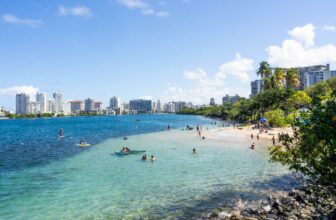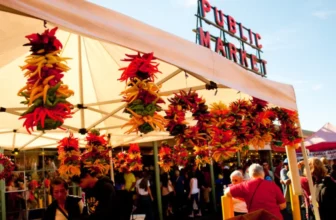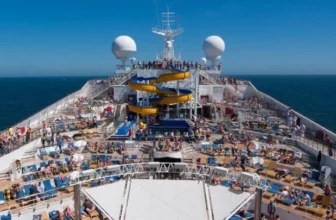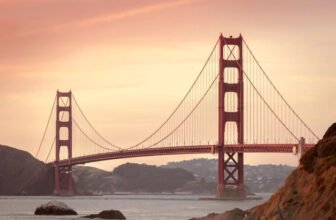“This might be the only table in the world where two African American Nobel Peace Prize winners sat down together.” says Mrs Jackson.
It’s my 8th day in Alabama and I’m on a civil rights tour of Selma, the city famous for being the birthplace of the modern civil rights and voting rights movements. I’m sitting at the table inside the Jackson Home where marches were planned and history was made.

The dining room table in the Jackson House, where both Martin Luther King and Ralph Bunche sat and discussed how to achieve cilil rights through peaceful protests.

It was in this home in historic Selma, Alabama where Martin Luther King Jr. stayed for many weeks while planning the voting rights marches to the State Capitol in Montgomery. As I stood in the bedroom he stayed in, staring at the bed he once slept in, my eyes glazed over as I imagined the long nights he stayed awake worrying about what lay ahead, weeping about foot soldiers brutally murdered in previous marches he had organised or writing speeches that would be broadcast around the world and forever remembered.
It was in this home that Martin Luther King would converse with President Johnson, urging him to stop the bloodshed, to protect his peaceful protests and to back the quest for the right to vote for African Americans. It was also in this home that the Jackson family would have wept upon hearing of the assassination of Martin luther King Jr, an event that threatened to ruin King’s lifelong advocacy for peaceful protests over outright violence.

Mrs Jackson in her childhood bedroom, the same room Martin Luther King Jr stayed in for many weeks while planning the Voting Rights marches in Selma, Alabama
It can be difficult to put into words one’s experiences in a place like this. A destination where it is not the culture, the food, nor the beautiful architecture we are visiting, but more an exact time in an exact place where history was made.
Many people say travelling to Europe’s great cities is more of an emotional feeling the a physical connection, and I believe the same can be said for Selma. I was excited about visiting Alabama but had no idea it would have such a profound effect on my emotions.
Sadness welled up inside of me at the thought of the innocent lives lost and the hardships and fear encountered by African American who simply wanted to vote. Anger was the overwhelming emotion when I saw white cloaks worn by the KKK hanging up inside of the museums we visited or knowing that one of the most famous bridges in the state is named after a KKK grand master. Disbelief is what I felt when I received an email urging me to stop sharing my experiences on social media if I was only going to right about the bad things and fail to remember the good. Fear overcame me at night, as I lay awake in my bed to the sounds of sirens passing by, knowing I was in one of the most dangerous cities in America. Finally, there was a shimmer of hope to be found for the future of Selma, and Alabama. Hope that things will get better, that tourism will develop further, that more people will make the pilgrimage here and actually care about the significance of the events that took place in a tiny town in Alabama in the spring of 1965.

Confederate flags can clearly be seen on the graves of war veterans in the Old Oaks Cemetery.


A lot of blood was spilled here, a lot of innocent lives taken. Reading about the levels of police brutality here in the 60’s sent shivers down my spine. Hearing about it first hand, however, shook me to the core. Children blown up in churches, young men kidnapped and beaten to death. Both black and white civil rights marchers murdered for standing up for what they believe in.
Mrs. Dianne Harris is walking me down the street marchers set out from in the Spring of 1965, as they left the church walking peacefully two by two towards the bridge, scared about what lay ahead. When marchers approached the bridge they were faced by state troopers, and possemen on horses, men who had permission to do “whatever it takes” to break up the protest march. With tear gas, batons and even guns, police enforcers would attack before protestors were given a chance to return.
“I held my younger brothers hand and we ran. We ran faster than we had ever run before and the only reason we ran that fast was that we were holding on to each other, spurring each other on,” Mrs Harris recounts.
“We never made it to the bridge. I’m not going to lie and say I marched over it. I tell it like it is. We saw those possemen and we ran.”


Hearing stories about the famous Selma to Montgomery Civil Rights marches, while standing on the bridge where it all began, helps to paint a picture of what life must’ve been like living here in the early 1960’s. Mrs Harris was just 15 years old at the time, and as we near the end of our historic walking tour we come across a framed photo of young student protestors and instantly recognise Mrs Harris standing alongside her childhood friends, marching for what she knew was right.
Check out Mrs Harris’ Facebook page to join one of her tours – you won’t find a better guide in Selma.

For a small town in rural Alabama, Selma has a lot of offer. While primarily a key destination on Civil Rights tours of the South, it should be considered more of a destination than a stopover. I’m unsure if there is any other town of this size in the world that is home to so much history. Just a few minutes drive from Selma where you will find Old Cahawba, the First State Capitol of Alabama. It is also home to the first White House of the Confederacy, built in 1835 and used by President Jefferson Davis. It is in Selma that you can tour the Jackson Home, where Martin Luther King planned marches and crafted history, you can visit the church that played a pivotal role in the marches, and walk the bridge that protestors and marchers attempted to cross no less than 3 times in their fight for voter rights.
There are stately mansions to tour, and civil and voting rights museums to visit. The city has it’s problems, and there are more than a few, but there is a lot of beauty to be found among the dilapidated buildings and boarded up house fronts. There’s a lot of charm in tiny Selma, from the beautiful historic houses to the antique shop fronts which sometimes make one feel like we have travelled back in time.


Progress, while slow, is to be seen all around the town and you can’t help but be hopeful for the future when talking to local character and now world-renowned artist Tin Man Charlie Lucas. You learn of his hardships as a child, how far he has come, and his mission to introduce more youth in Selma to the arts. You might even spot his unique artwork in Birmingham Airport as you depart, as well as in the homes of art collectors around the globe.
“You know they teach me just as much as I teach them,” Charlie recounts, as he explains how his art camp students created the imaginative Trojan Horse made from recycled materials standing in front of us. “I used to tell people about the story of the tin man, and how I was going to introduce the tin man to the world. They thought I was crazy,” Charlie recalls.
When you listen to Charlie, a natural born storyteller, talk about what it took to get him where he is today, how endless psychiatrists had deemed him a lost cause and even his own family thought he was crazy, you know there is hope for everyone. He told people for decades of his plans for the “tin man”, toys and artwork made from items he would find in the trash or thrown away in his community, but no one seemed to understand his vision. He would tell people about the dinosaurs he could see, but failed to explain how he wasn’t seeing imaginary animals from the past but simply envisioning pieces of artwork he wished to make.
Read Charlie’s biography here – a fascinating man and a fascinating read.


You meet eccentric characters at every corner, such as David Hurlbut, an antique dealer and property developer, who chose to move from Atlanta to tiny Selma to buy an abandoned 3-storey Gentlemen’s club and turn it into his own private home. (New York Times article about David from 2010 – worth a read!)
“There’s a ballroom up there that can host up to 600 people. You think I’m joking but I’m not. I’m for real,” David laughs, as we walk past him on our way into Charlie’s (a restaurant located next to his one-of-a-kind home) for some delightful Blue Cheese Burgers. (The place is packed, in case you’re wondering.)
From these local characters to the wonderful lady running the quaint Orville Farmers Market, to the local Chamber of Commerce (if you’re heading to Selma, get in touch with them!) who’s current mission is to introduce free WIFI to the town, it’s clear that change is on the way, and it’s the type of change that can only put Selma in the right direction.


Unlike cosmopolitan Huntsville with its alternative event spaces and craft breweries or capital of cool Montgomery with a growing food scene, Selma is in a world of its own.
Some restaurants have been around for decades, where as other have opened in the past 12 months. What you see is what you get, and while far from fancy, this is the home of true Southern Hospitality and soul food to get you through the day. These restaurants are the kind pf places where everyone stops by to say hello, to ask where you’re from, and to thank you for visiting. It’s also home to some of the best BBQ in Alabama – pulled pork so soft it will melt in your mouth.


I travelled to America’s Deep South, an area known as the Black Belt (thanks to the rich, black soil perfect for growing cotton) not just to learn about Alabama’s dark past but also to experience a part of the country than most people told me not to visit. I needed to experience rural Alabama first hand, regardless of any quirks that may come with the package. I arrived with an open mind, hoping to be educated and left with a head full of questions but hope for the future.
















